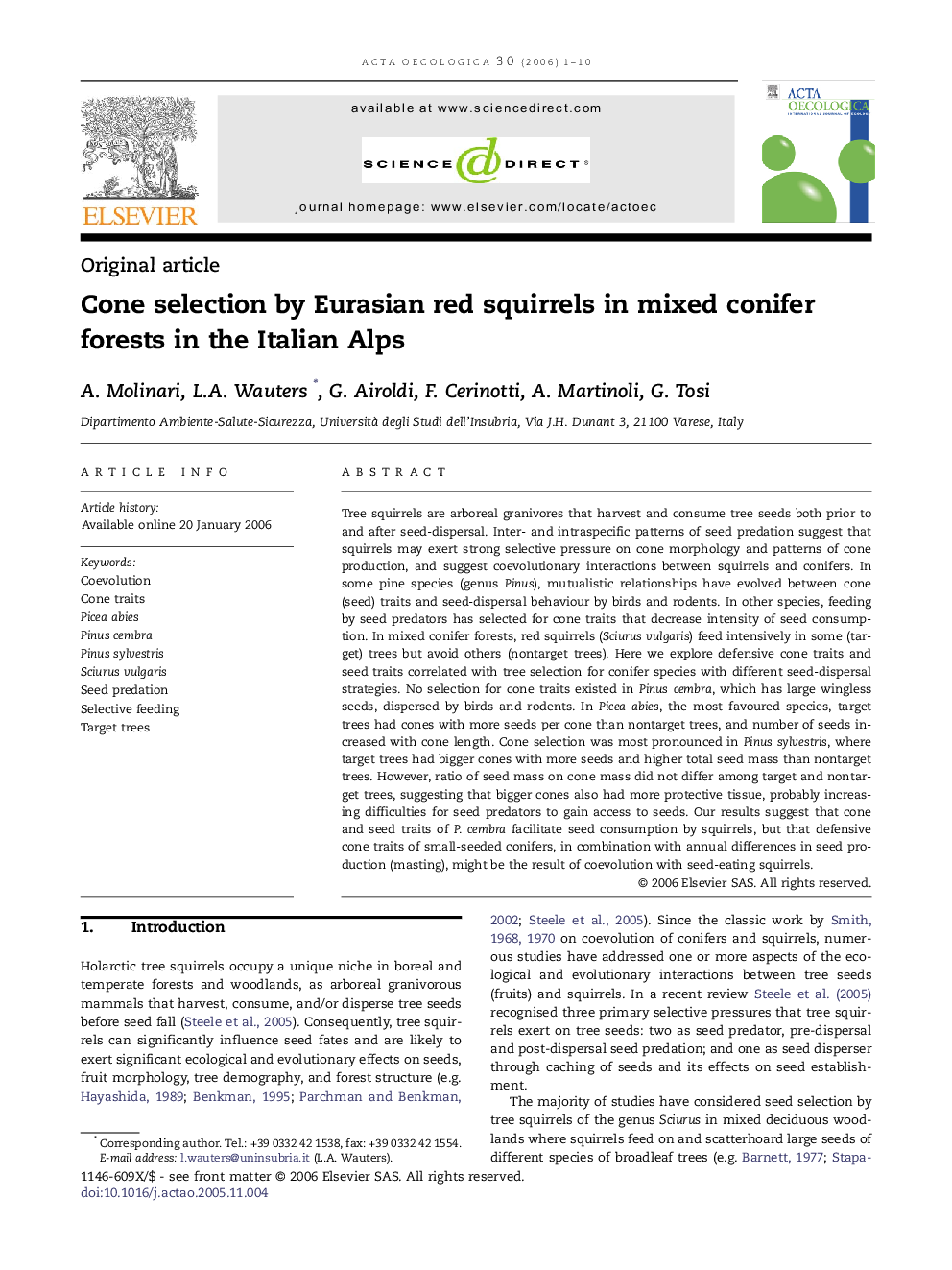| کد مقاله | کد نشریه | سال انتشار | مقاله انگلیسی | نسخه تمام متن |
|---|---|---|---|---|
| 4381223 | 1304060 | 2006 | 10 صفحه PDF | دانلود رایگان |

Tree squirrels are arboreal granivores that harvest and consume tree seeds both prior to and after seed-dispersal. Inter- and intraspecific patterns of seed predation suggest that squirrels may exert strong selective pressure on cone morphology and patterns of cone production, and suggest coevolutionary interactions between squirrels and conifers. In some pine species (genus Pinus), mutualistic relationships have evolved between cone (seed) traits and seed-dispersal behaviour by birds and rodents. In other species, feeding by seed predators has selected for cone traits that decrease intensity of seed consumption. In mixed conifer forests, red squirrels (Sciurus vulgaris) feed intensively in some (target) trees but avoid others (nontarget trees). Here we explore defensive cone traits and seed traits correlated with tree selection for conifer species with different seed-dispersal strategies. No selection for cone traits existed in Pinus cembra, which has large wingless seeds, dispersed by birds and rodents. In Picea abies, the most favoured species, target trees had cones with more seeds per cone than nontarget trees, and number of seeds increased with cone length. Cone selection was most pronounced in Pinus sylvestris, where target trees had bigger cones with more seeds and higher total seed mass than nontarget trees. However, ratio of seed mass on cone mass did not differ among target and nontarget trees, suggesting that bigger cones also had more protective tissue, probably increasing difficulties for seed predators to gain access to seeds. Our results suggest that cone and seed traits of P. cembra facilitate seed consumption by squirrels, but that defensive cone traits of small-seeded conifers, in combination with annual differences in seed production (masting), might be the result of coevolution with seed-eating squirrels.
Journal: Acta Oecologica - Volume 30, Issue 1, July–August 2006, Pages 1–10